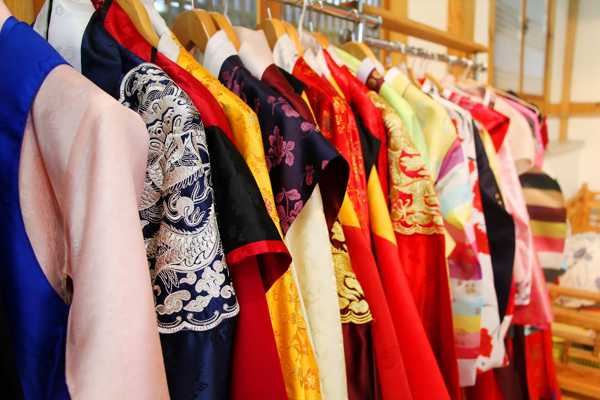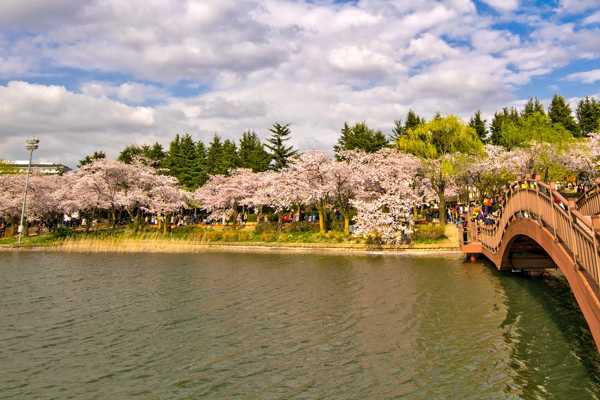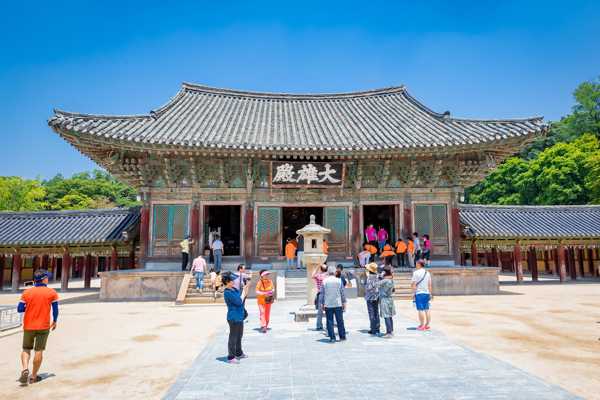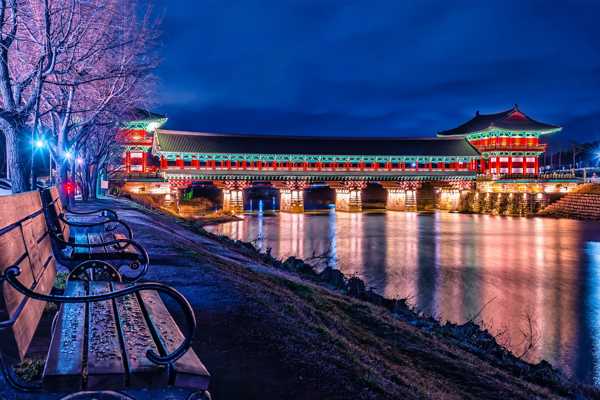경주는 소나무 숲과 바다가 만들어내는 아름다운 풍경을 감상하는 것만으로도 시간을 보낼 수 있어요. 주상절리 파도소리길이나 삼릉숲, 경주 계림이나 문무대왕릉 등을 찾아 걸어 보세요. 현대적인 감각이 더해진 우리나라 최초의 동식물원인 동궁원이나 경주 기림사 등에선 조상들의 예술 감각을 느낄 수 있어요. 경주 양동마을이나 읍천항 벽화마을 등 경주 사람들이 생활을 엿볼 수 있는 마을을 방문하는 것도 추천해요.
- 1
주상절리 파도소리길

- 알뜰 여행
- 커플
- 단체
용암이 다양하고 독특한 모습으로 만들어 낸 주상절리 덕분에 이 주변은 독특하고 멋진 경관을 자랑해요. 주상절리 전 구간을 볼 수 있는 파도소리길은 환경과 어우러지도록 조성되었어요. 곳곳에 설치된 주상절리의 설명을 읽다 보면 신기함이 배가 돼요. 주상절리 전망대까지도 무료로 관람할 수 있는 파도소리길을 걸으며 여유를 즐겨 보세요. 수학 여행으로만 알고 있던 경주를 새롭게 바라보는 기회가 될 거예요.
주소: 경북 경주시 양남면 읍천리
지도 - 2
삼릉숲

- 알뜰 여행
- 커플
- 가족
- 역사
구불구불한 모양새로 자란 불규칙한 소나무가 숲을 이뤄 삼릉과 경애왕릉을 둘러싼 숲을 삼릉숲이라고 해요. 신라 천년의 성지로 불리는 남산의 한쪽을 차지하고 있는 이곳은 신비로운 풍경이 매력적인 숲이에요. 숲 그대로 살아있는 신라의 역사가 담긴 소나무 숲의 나무 사이로 빛나는 해와 안개에 뒤덮인 환상적인 소나무 숲을 찍으려 많은 사진가가 방문하는 곳이기도 해요.
주소: 경북 경주시 배동
지도 - 3
문무대왕릉

- 알뜰 여행
- 커플
- 가족
- 역사
문무대왕릉은 죽어서도 왜구의 침입을 막고자 동해에 자신의 유골을 묻어달라고 한 문무왕의 유언에 따라 만들어졌다는 수중 무덤이에요. 세계에서 하나뿐인 이 해중왕릉은 자연의 바위를 이용해 만들어졌는데 신라인들의 창의력에 놀라지 않을 수가 없어요. 문무대왕릉 근처에서는 무당들이 자주 다양한 굿을 하며 제사를 지내기도 하는데, 이 또한 이곳만의 독특한 볼거리랍니다.
주소: 경북 경주시 양북면 봉길리 26
지도사진 제공: vatar/편성재 - 직접촬영 (CC BY-SA 3.0) 수정됨
- 4
경주계림

- 알뜰 여행
- 커플
- 가족
- 역사
경주 교동의 첨성대와 월성 사이에 위치한 숲인 계림은 시림이라고도 불리는데 신라 미추왕 김알지의 탄생 비화가 전해지고 있어요. 오래된 숲이라 이상하게 꺾인 고목들이 가득하지만 봄이 되면 노란 유채꽃이 피어 사랑스러운 풍경을 만들어 내기도 해요. 유채꽃과 기괴한 고목이 만들어 내는 독특한 풍경 덕분에 사랑하는 사람과 함께 걸으며 분위기 있는 사진을 찍을 수 있기도 해요.
주소: 경북 경주시 교동
지도사진 제공: 한솔임 (CC BY-SA 4.0) 수정됨
- 5
경북경주양동마을

- 알뜰 여행
- 가족
- 단체
- 역사
양반 가옥의 원형이 잘 보존된 양동마을은 그 규모는 물론 전통성과 뛰어난 건축양식 등으로 우수한 가치를 지닌 것을 인정받아 유네스코 세계문화유산에도 등재되었어요. 유교와 풍수지리를 반영해 조성된 이 마을은 현재까지도 양반의 후손들이 살아 그 얼을 계승하는 위대한 주거 문화유산이에요. 좁은 골목과 마을 입구에 있는 연못이 운치가 있죠. 붐비는 관광지가 아니기 때문에 조용히 산책을 즐기려는 분들에게 추천해 드려요.
주소: 대한민국 경상북도 경주시 강동면 양동마을길 93
지도사진 제공: wikimedia.org (CC BY-SA 3.0) 수정됨
- 6
경주 동궁원

- 어드벤처
- 알뜰 여행
- 가족
- 단체
경주의 관광특구 보문단지 근처에 있는 동궁원은 우리나라에서 처음으로 지은 동물원과 식물원이에요. 천년고도의 도시답게 모든 건물이 한옥의 형태로 건축 설계되었고 건물 전체가 통유리로 지어져 식물들이 잘 자랄 수 있도록 세심하게 신경을 썼어요. 넓은 부지에 조성되어 있어 귀여운 앵무새들과 곳곳에 설치된 사진 촬영 장소 등을 하루가 금세 지나가요. 아이들과 함께 왔다면 여기저기 숨어있는 스탬프투어를 함께 하면 더 신날 거예요.
주소: 경북 경주시 보문로 74-14
운영 시간: 매일 09:30 - 19:00연중무휴
지도사진 제공: Roadgo (CC BY-SA 3.0) 수정됨
- 7
읍천항 벽화마을

- 알뜰 여행
- 커플
- 가족
경주시 양남면에는 국가 어항으로 지정된 읍천항이 있어요. 마을 전체에 빼곡하게 채워진 마을 벽화로 인해 더 유명해져서 해파랑길의 새로운 코스로 자리매김했어요. 수수한 어촌마을과 참 잘 어울리는 벽화들은 어디서 찍어도 작품 같아요. 주상절리 파도소리길을 따라 걷다 보면 보이는 또 하나의 커다란 보물. 그림인 척 의자들이 숨어 있으니 쉬엄쉬엄 벽화들을 감상해보세요.
주소: 경상북도 경주시 양남면 읍천리
지도사진 제공: Cramk777 (CC BY-SA 4.0) 수정됨
- 9
경주 남산

- 알뜰 여행
- 커플
- 가족
- 단체
- 역사
경주의 남산은 신라 건국 설화의 주인공 박혁거세부터 금오신화의 작가 김시습까지, 화려한 불교 유적과 신라의 흥망성쇠가 가득 담겨 있는 산이에요. 국보, 보물, 문화재 등 7개의 보물이 숨어 있는 남산에서 진짜 보물을 찾아보세요. 오르는 길은 힘들어도 인적 드문 산 속에서 신라 시대의 보물을 만날 때마다 조상들에게 감탄하게 될 거예요. 산에 오르기 전 미리 확인하지 않으면 보물을 놓칠지도 몰라요.
주소: 경북 경주시 배동
운영 시간: 매일 06:00 - 18:00야간산행 금지
지도사진 제공: Whtjs1349 (CC BY-SA 4.0) 수정됨


















